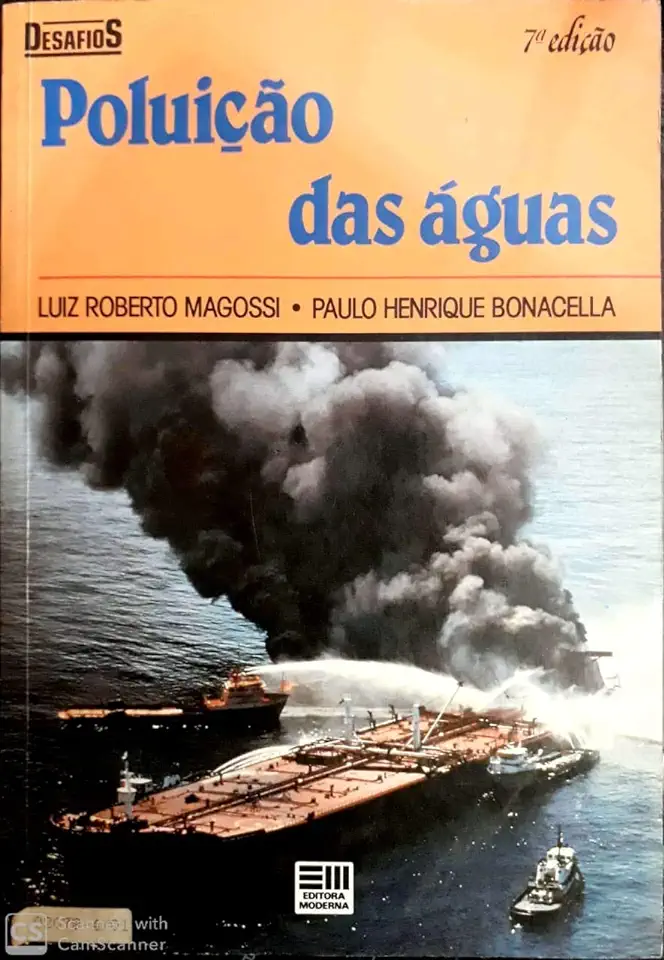
Water Pollution - Luiz Roberto Magossi / Paulo Henrique Bonacella
Water Pollution: A Comprehensive Overview
By Luiz Roberto Magossi and Paulo Henrique Bonacella
Introduction
Water pollution is a serious and growing problem that threatens the health of our planet and its inhabitants. This book provides a comprehensive overview of water pollution, from its sources and causes to its effects on human health and the environment. It also discusses the various methods that can be used to prevent and control water pollution.
Sources and Causes of Water Pollution
Water pollution can come from a variety of sources, including:
- Industrial wastewater: Industrial activities can generate a variety of pollutants, including heavy metals, toxic chemicals, and solvents. These pollutants can be discharged into water bodies through wastewater streams.
- Municipal wastewater: Municipal wastewater treatment plants discharge treated wastewater into water bodies. However, this wastewater can still contain pollutants, such as nutrients, pathogens, and pharmaceuticals.
- Agricultural runoff: Agricultural activities, such as farming and livestock production, can generate pollutants that can runoff into water bodies. These pollutants include nutrients, pesticides, and herbicides.
- Stormwater runoff: Stormwater runoff can carry pollutants from impervious surfaces, such as roads and parking lots, into water bodies. These pollutants include sediment, nutrients, and toxic chemicals.
- Onsite wastewater systems: Onsite wastewater systems, such as septic tanks, can discharge pollutants into groundwater and surface water. These pollutants include nutrients, pathogens, and pharmaceuticals.
Effects of Water Pollution on Human Health
Water pollution can have a variety of negative effects on human health, including:
- Gastrointestinal illness: Water pollution can cause gastrointestinal illness, such as diarrhea, vomiting, and abdominal pain.
- Skin infections: Water pollution can cause skin infections, such as rashes, boils, and abscesses.
- Respiratory infections: Water pollution can cause respiratory infections, such as pneumonia, bronchitis, and asthma.
- Cancer: Water pollution can increase the risk of certain types of cancer, such as bladder cancer, colon cancer, and rectal cancer.
- Reproductive problems: Water pollution can cause reproductive problems, such as infertility, miscarriage, and birth defects.
- Neurological problems: Water pollution can cause neurological problems, such as headaches, dizziness, and memory loss.
Effects of Water Pollution on the Environment
Water pollution can also have a variety of negative effects on the environment, including:
- Eutrophication: Water pollution can cause eutrophication, which is the overgrowth of algae and other aquatic plants. Eutrophication can lead to a decrease in oxygen levels in the water, which can kill fish and other aquatic organisms.
- Habitat destruction: Water pollution can destroy habitat for fish and other aquatic organisms. This can disrupt the food chain and lead to a decline in biodiversity.
- Climate change: Water pollution can contribute to climate change by releasing greenhouse gases into the atmosphere. Greenhouse gases trap heat, which can lead to global warming.
Methods for Preventing and Controlling Water Pollution
There are a variety of methods that can be used to prevent and control water pollution, including:
- Reducing the use of pollutants: One of the most effective ways to prevent water pollution is to reduce the use of pollutants. This can be done by using less toxic chemicals, recycling materials, and composting organic waste.
- Treating wastewater: Wastewater treatment plants can remove pollutants from wastewater before it is discharged into water bodies.
- Managing stormwater runoff: Stormwater runoff can be managed to reduce the amount of pollutants that enter water bodies. This can be done by using green infrastructure, such as rain gardens and permeable pavement.
- Protecting wetlands: Wetlands can help to filter pollutants from water. Protecting wetlands can help to reduce water pollution.
- Educating the public: Educating the public about water pollution can help to raise awareness of the problem and encourage people to take action to prevent it.
Conclusion
Water pollution is a serious and growing problem that threatens the health of our planet and its inhabitants. However, there are a variety of methods that can be used to prevent and control water pollution. By working together, we can protect our water resources and ensure a healthy future for our planet.
Call to Action
If you are concerned about water pollution, there are a number of things you can do to help:
- Reduce your use of pollutants.
- Support wastewater treatment plants.
- Manage stormwater runoff.
- Protect wetlands.
- Educate yourself and others about water pollution.
By taking action, you can help to make a difference in the fight against water pollution.
Enjoyed the summary? Discover all the details and take your reading to the next level — [click here to view the book on Amazon!]